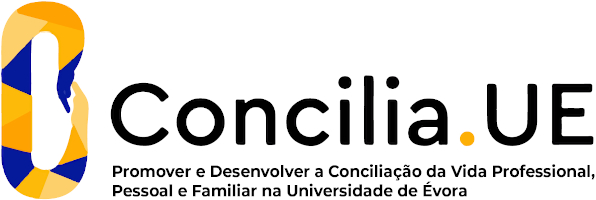2024
Neuroendocrine Biology
Name: Neuroendocrine Biology
Code: BIO11090L
6 ECTS
Duration: 15 weeks/156 hours
Scientific Area:
Biological Sciences
Teaching languages: Portuguese
Languages of tutoring support: Portuguese, English
Regime de Frequência: Presencial
Sustainable Development Goals
Learning Goals
1) To know the main anatomical and functional topics of the human neuro-endocrine system, from cells to tissues and organs.
2) To know the main environmental threats to the homeostasis of the neuro-endocrine system: neuro-endocrine disruptors.
3) To know the fundamental topics of Primatology, including the main evolutionary steps of psychomotor development and social organization of hominid primates that precede the human species.
At the end of this course, students should have acquired the following skills: ability to identify and describe the role of neurons, endocrine and neuro-endocrine cells in regulating the organism; critical awareness of the importance of environmental policies to mitigate the impact of endocrine disruptors on physiological balance; ability to compare behaviours and social structures of primates with those of the human species, and to analyse data from evolutionary biology to understand human behaviour.
2) To know the main environmental threats to the homeostasis of the neuro-endocrine system: neuro-endocrine disruptors.
3) To know the fundamental topics of Primatology, including the main evolutionary steps of psychomotor development and social organization of hominid primates that precede the human species.
At the end of this course, students should have acquired the following skills: ability to identify and describe the role of neurons, endocrine and neuro-endocrine cells in regulating the organism; critical awareness of the importance of environmental policies to mitigate the impact of endocrine disruptors on physiological balance; ability to compare behaviours and social structures of primates with those of the human species, and to analyse data from evolutionary biology to understand human behaviour.
Contents
1) Neuron physiology: generation and propagation of the action potential.
2) Anatomical and functional diversity of neurons; neuroglia.
3) Synapses: neurotransmitters and postsynaptic receptors.
4) Anatomical and functional organization of the nervous system.
5) Endocrine glands; secretory mechanisms; chemical nature and mode of action of hormones.
6) Neuro-endocrine interface: hypothalamus and adrenal medulla; hypothalamus and pituitary; hypothalamus ? anterior pituitary ? endocrine gland axes; circuits for regulating plasma hormone levels.
7) Physiological effects of hormones.
8) (Neuro)endocrine disruptors: environmental contaminants that confuse the endocrine system; endocrine disruption mechanisms; known and potential effects of endocrine disruptors.
9) Evolution of human behaviour.
10) Why study the behaviour of non-human primates.
11) Social organization, communication, and cognition in hominid primates.
12) Behaviour genetics: heritability and research strategies.
2) Anatomical and functional diversity of neurons; neuroglia.
3) Synapses: neurotransmitters and postsynaptic receptors.
4) Anatomical and functional organization of the nervous system.
5) Endocrine glands; secretory mechanisms; chemical nature and mode of action of hormones.
6) Neuro-endocrine interface: hypothalamus and adrenal medulla; hypothalamus and pituitary; hypothalamus ? anterior pituitary ? endocrine gland axes; circuits for regulating plasma hormone levels.
7) Physiological effects of hormones.
8) (Neuro)endocrine disruptors: environmental contaminants that confuse the endocrine system; endocrine disruption mechanisms; known and potential effects of endocrine disruptors.
9) Evolution of human behaviour.
10) Why study the behaviour of non-human primates.
11) Social organization, communication, and cognition in hominid primates.
12) Behaviour genetics: heritability and research strategies.
Teaching Methods
Program contents 1) to 7) are learned by integrating expository theoretical classes with the student's autonomous work guided by research exercises and bibliography (book chapters and scientific articles) made available by the teacher on the Moodle platform. Content 8) is learned in a theoretical-practical with discussion of case studies, at the end of the semester. Contents 9) to 12) are learned in theoretical-practical classes that include: 1) watching of relevant films and documentaries followed by discussion; 2) solving quantitative genetic exercises to evaluate the heritability of phenotypes. The Moodle platform is used to support autonomous learning work by providing access to bibliography and other teaching materials; self-assessment exercises; discussion forums.
Assessment
The self-assessment exercises available on the Moodle platform throughout the semester allow the student to evaluate their learning of the syllabus and identify weak points that should deserve more attention and clarification with the teacher.
Assessment is quantitative with the option of continuous assessment or final exam assessment.
Continuous assessment is through two tests (in the middle and at the end of the semester) with equal weight in the final grade; the minimum score in each of the two tests is 10 (scale 0-20 points). Failure in continuous assessment requires the student to undergo final assessment by exam.
Final assessment is by exam with two assessment opportunities (normal period and appeal period).
Assessment is quantitative with the option of continuous assessment or final exam assessment.
Continuous assessment is through two tests (in the middle and at the end of the semester) with equal weight in the final grade; the minimum score in each of the two tests is 10 (scale 0-20 points). Failure in continuous assessment requires the student to undergo final assessment by exam.
Final assessment is by exam with two assessment opportunities (normal period and appeal period).





















